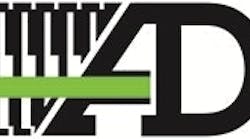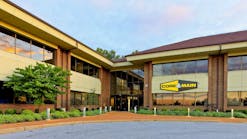Using low impact development (LID) concepts in combination with proprietary systems in its plan to control storm water runoff in Sarasota, Fla., design engineering firm DMK Associates Inc. (Venice, Fla.) was able to create a system that would protect a local aquatic preserve and reduce construction costs for local businesses. According to the Stormwater Equipment Manufacturers Assn. (SWEMA), this type of design provides the means to reduce runoff volume, treat storm water pollution and beautify the neighborhood.
The first goal of the storm water infrastructure upgrade—which was started in September 2012—was to improve and protect the water quality of the local Lemon Bay Aquatic Preserve by eliminating the discharge of runoff from the entire district to the maximum extent possible. The second was to build a sustainable storm water management infrastructure that would eliminate the need for local businesses and prospective commercial developers to bear the expense of implementing their own storm water systems. Doing so could have a favorable impact on the local economy, lowering the cost of new commercial construction and spurring the redevelopment of the area.
The concept of integrated LID was recommended to meet the storm water management requirements as well as provide additional benefits. The LID scheme would reduce the total volume of runoff, as opposed to simply detaining it. This approach also would create new green space that beautified the neighborhood in addition to detaining and treating storm water runoff.
A Treatment Train Approach
The team recognized the importance of using a treatment train approach for an optimal level of pollutant reduction when runoff could not be eliminated and had to be discharged into the aquatic preserve.
Because seasonal high groundwater will limit infiltration, the bioswales incorporate underdrains that discharge effluent to a reuse/discharge pipe. During more intense storm events, or during periods of seasonal high groundwater that limit infiltration capacity, excess runoff flows into the reuse/ discharge section, which was constructed using 13,000 ft of 12- to 36-in.-diameter HP pipe manufactured by Advanced Drainage Systems Inc. (ADS). Pipe connections into this system were made using 74 ADS InsertaTee fittings ranging from 6 to 18 in. in diameter. When the flow in the reuse/discharge unit exceeds its storage capacity, the excess flow is conveyed to an 8-ft Hydro Intl. Downstream Defender advanced vortex separator installed on West Perry Street for final treatment prior to being discharged into Lemon Bay, an 8,000-acre aquatic preserve.
A 6-ft-diameter vortex separator was installed nearby as the last BMP in the treatment train managing runoff from Englewood Road. The design scheme called for vortex separators to be the final BMP in the treatment train before runoff is discharged to the aquatic preserve. The use of the units provided redundancy in the LID treatment scheme, which was essential due to the frequent incidence of intense storms and the potential for seasonal high groundwater to limit the infiltration capacity of the upstream bioswales.
Along with the two separators, the system used 109 ADS Flexstorm inlet filters to trap debris. Additionally, 135 ADS Nyloplast basins—which combine ductile iron grates with a heavy-duty PVC structure—18 to 30 in. in diameter were used to filter silt, solids and other pollutants from road surfaces.
“Englewood now has an LID storm water management scheme that incorporates environmentally sound components of storm water reuse pipes and manufactured BMPs to reduce runoff volume and treat the remaining runoff that cannot be eliminated,” Honnigford said. “Because these LID techniques economically maximize the effectiveness of reducing and treating storm water runoff in a small area, we believe this pilot project will soon become another industry standard.”







